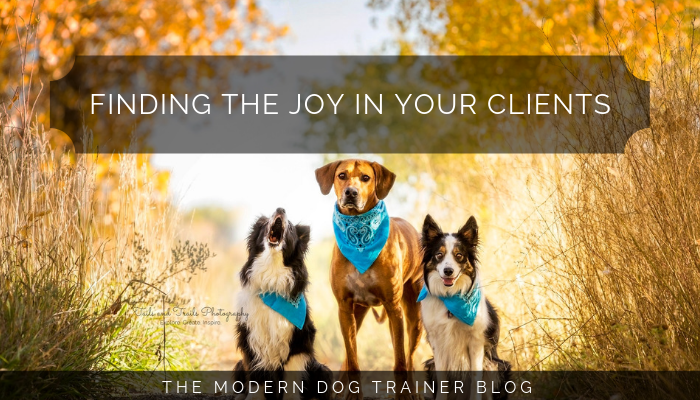
by TMDT Team | Nov 13, 2018 | Business, Communication
Guest post graciously submitted by Megan Wallace B.S., CPDT-KA, CNWI, owner of Dogs Deciphered LLC.
Dog training is a people-centric business, which can be a bit of a shock for new trainers who got interested in the field because they prefer dogs to people. I’ve yet to meet a dog with a checkbook, which means that our clients are the people, and we are providing them with a service, which is educating them in how to train their dog. I am totally obsessed with dogs, and think they are the most amazing creatures ever, however I got into dog training for the people. The way I see it, if my goal is to help as many dogs as possible, I will never achieve that goal on my own. I can’t keep enough dogs in my own home to make any significant change to the dog population as a whole. So, I have to connect with the guardians of my favorite beings on the planet, people. In helping them to find understanding with their dogs, I have helped more dogs, because their current and future dogs will benefit from that information. If they cannot process the information, or aren’t successful with it, I haven’t accomplished my goal.
 I wanted to take my goal a step further and help other trainers be more successful, thus helping even more dogs. I came to recognize that other trainers are not always successful in connecting with clients. This leaves them feeling frustrated with their jobs, as they are unable to help the dog. Sometimes, this leads to blaming the client – they aren’t compliant, they don’t practice, they don’t listen, and so on. I believe it is up to us as trainers to discover why they are struggling, and take on the challenge of helping them to succeed. People are complicated beings with a variety of circumstances, experiences, and motivations. Your job is to help with one aspect of their lives, their dog’s behavior.
I wanted to take my goal a step further and help other trainers be more successful, thus helping even more dogs. I came to recognize that other trainers are not always successful in connecting with clients. This leaves them feeling frustrated with their jobs, as they are unable to help the dog. Sometimes, this leads to blaming the client – they aren’t compliant, they don’t practice, they don’t listen, and so on. I believe it is up to us as trainers to discover why they are struggling, and take on the challenge of helping them to succeed. People are complicated beings with a variety of circumstances, experiences, and motivations. Your job is to help with one aspect of their lives, their dog’s behavior.
What Can You Gain?
There are several benefits to improving your feelings toward your clients, starting with greater job satisfaction. The more you like your clients, the more you want them to succeed, which makes you work harder at your job. You will improve your client communication, because you are working toward gaining empathy with your clients. Again, the better you communicate, the more success your clients will have. This is a positive feedback loop that benefits everyone, you, the client, and the dog(s). All of this will result in better results, and increased word of mouth. People don’t tell their friends and neighbors about services that were just satisfactory, they tell them about services that shined in client communication while providing results. Being able to work with, and succeed with “difficult” people, whom others might struggle with reaching, gives you a competitive edge in your market. By using the framework described in this article, you can become comfortable with conflict, which is a special skill set in working directly with people.
Understanding Your Clients
There is a reason a prospective client contacts you, and these reasons vary greatly. The clients we all tend to love are the proactive sort. “I just adopted this dog, I’d like to start training right away” sounds so much more inviting than “If you can’t help us, we will have to get rid of the dog!”. It’s important to remember that many people have more reasons not to call than to call. People wait to reach out for help for a number of reasons, finances being the top of the list. Other reasons that might delay first contact include:
- Scheduling restrictions
- Embarrassment
- Unsuccessful attempts to contact a different trainer
- Have tried training before and felt unsuccessful
- Lack of resources (no one to ask who to call for help)
- Disagreement within the family regarding the dog
- Health issues
- Belief they can solve the problem through internet advice
Clearly there are a lot of reasons people may choose to delay seeking professional advice in helping their dog. Very rarely is the reason “doesn’t care about the dog”, yet that seems to be how some trainers perceive this delay. The information given to you at first contact can shape your attitude toward that client, but you should be cautious to let it do so, because it often doesn’t tell the whole story. Remember that upon first contact, your client may be under a good deal of stress. Be forgiving of any information they give you, including actions they might have taken against their dog. They are currently operating with a lack of knowledge, and you are just the person they need.
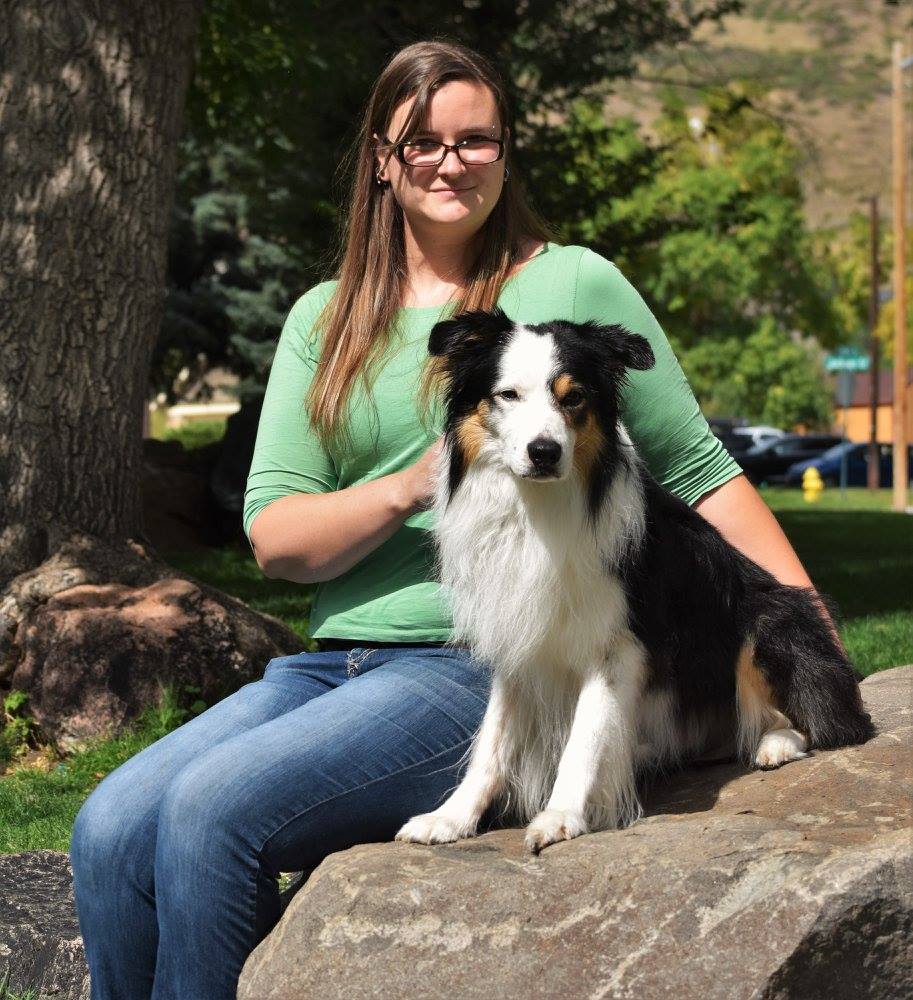 Depending on whether you do in-home training, or facility based training, you may be able to tell more or less about your client’s life circumstances. I have found this to be absolutely no indication of how dedicated a client will be, so this information is to be taken in without judgement. However, having a feel for whether a client has a limited income vs. money to spare can help you to communicate in a way that is empathetic toward their situation. Suggesting cost effective options for some of the equipment and enrichment items they might need will go a long way to helping someone who saved up for your training package feel like they can accomplish their goals. Other clients may be more than willing and able to buy anything that might help them, and will appreciate you suggesting the top products on the market.
Depending on whether you do in-home training, or facility based training, you may be able to tell more or less about your client’s life circumstances. I have found this to be absolutely no indication of how dedicated a client will be, so this information is to be taken in without judgement. However, having a feel for whether a client has a limited income vs. money to spare can help you to communicate in a way that is empathetic toward their situation. Suggesting cost effective options for some of the equipment and enrichment items they might need will go a long way to helping someone who saved up for your training package feel like they can accomplish their goals. Other clients may be more than willing and able to buy anything that might help them, and will appreciate you suggesting the top products on the market.
Other questions that will help you to understand why a client might be frustrated, angry, or disengaged from the training process include:
- How long have they been dealing with this situation?
- What is their lifestyle, and how does the dog fit into it?
- What is their previous dog experience? What about training experience?
- How is the behavior affecting the client’s everyday life?
I find it is important when you meet a client for the first time to get a sense for how much time and energy they are able and willing to put into trying to change their dog’s behavior. Try to formulate an answer for this question without judgement. Remember, the reasons that limit people from committing more time or money to their dog rarely include “I don’t care about the dog”. If you can tailor your own expectations, and the client’s expectations to fit the amount of work that can be done, you will both be happier in the end. Be creative in thinking of options for those who can’t afford to buy a large training package, or have difficulty finding the time to train. Often, if you can get them started and they see results, they will continue to make training a priority.
Developing Empathy
Empathy is the ability to understand another person’s experience by imagining yourself into that experience. This is a skill that most of us started developing as a child, gaining more understanding as we experienced more of the world. Some people hold the false belief that “you are who you are” when it comes to your ability to empathize with others, but we know that dogs can change strongly ingrained behaviors, and so can we! Learning to empathize takes a willingness to change, and think past your own experience.
The most important thing about using an empathetic approach is listening to what your client has to say. Listening is also a skill that needs to be developed, and active listening is important to empathizing. Acknowledging what your client has told you, “It sounds like you are feeling very frustrated about Fluffy’s behavior” helps them to feel heard. If you don’t understand what your client is saying, ask them to clarify. The easiest way to understand someone else’s experience is to ask them about it! Watch their body language to see if they feel comfortable or concerned, so that you can respond appropriately.
If you find yourself disagreeing with a client, consider their perspective, and evaluate your own attitude. It may be that they don’t have enough information to make an informed opinion, or their personal experience is clouding their ability to understand the bigger picture. However, it could also be that you are overly focused on being “right”, and that by opening your mind to other possibilities you could reach some understanding. An important part of empathy is recognizing and accepting that your perspective is not shared with every other person.
Our clients are not purposefully doing things wrong. There is a ton of information, and misinformation, out there about changing dog behavior. We can’t expect our clients to be masters of wading through this information to find only the best sources. Often people’s choices are influenced by friends or family member’s recommendations, or the top results brought up by a search engine. What they have done in the past should not influence our feelings about them as people, because they didn’t know they were following bad advice.
Developing empathy with our clients includes active listening, considering the other person’s perspective, keeping your self open to new ideas, and recognizing that people’s behavior is based on the information they have, which may be incorrect or limited. Your goal is to help the client feel heard, and to approach any disagreement from an understand place.
People Are Fascinating!
The human race is incredibly diverse in culture, experience, and attitudes, and as dog trainers we get to see a decent cross-section of our communities. There are so many different stories of how people have come to live with dogs, and despite their struggles, they are really trying to do so successfully. Allow yourself to be fascinated by the people you meet. These people have invited us into their lives, their homes, and their struggles. We can honor that by being interested in their lives, and helping to improve things as they relate to the dog.
Many trainers love to solve difficult problems with dogs, and why should more difficult clients be any different? Our job is to change behavior, and the same principles apply to people learning as to dogs. We are quick to break things down for a dog who is struggling to learn a new task, so we should do the same for a struggling client. You will get the same feeling of accomplishment when your client performs a difficult skill as when their dog does the same. Give your clients achievable goals, and don’t make them goals that you could achieve, they aren’t dog trainers! With clients who are struggling to make training a consistent habit, here’s an achievable goal – ask them to count out 5 treats before each meal (it could even be pieces of kibble) and practice one of the exercises 5 times. Learn about habit making and make it your goal to help your clients start new habits.
Lastly, people are very complex, which often means our first assumptions can be way off. This is especially true with email or text contact, because meanings can easily be misconstrued, and inflection is lost. Give people the benefit of the doubt, and allow yourself to get to know the person over time. Sometimes we get stuck in the idea that a client is going to be difficult because of something they said in their first contact call or email, but there are so many reasons that could be a poor representation of them as a person. Often people don’t reach out until something bad has happened, and they are likely processing that event. Other people are just not great at communicating by phone or email, but do much better face-to-face. Don’t hold on to your preconceived notions, there is a lot at play here, most of which doesn’t relate to you.
In Conclusion
Dog trainers are also people trainers, and we need to take that part of our job seriously. You should be spending time learning about interacting with people and developing your own skills. Your communications will improve when you understand your client’s circumstances, what they have been dealing with, and how it is affecting their lives. You aren’t going to agree with everything a client says or does, but you have to accept that you aren’t going to change their views on everything. Giving them as much information as they can digest gives them the tools they need to do better. An empathetic approach helps you to navigate these waters of changing or influencing human behavior. By considering your client’s perspective, you can work through conflict, and more effectively recommend solutions to their problems. Finally, take a moment to appreciate how fascinating people are! Just think about some of the stories you’ve heard in your time as a dog trainer, it’s likely you have some doozies. Find delight in the differences between people, and in finding creative solutions to helping them. You will find yourself more satisfied with your job, less stressed, and more successful by finding the joy in your clients.
About the Author
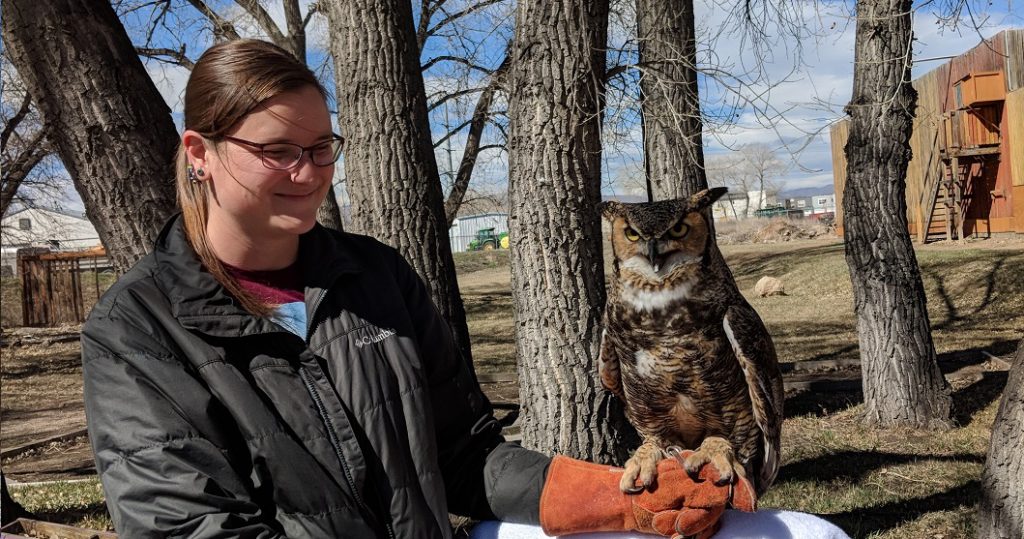
Megan Wallace, B.S., CPDT-KA, CNWI, owner of
Dogs Deciphered LLC, has been training dogs since age 11 when she attempted to certify her family dogs as therapy dogs. While the family dogs were a bit old to pursue new careers, being 11 and 13, Megan was at the start of a lifelong passion for dogs which eventually became her career. This passion led her into the world of dog behavior and training, and started a quest for knowledge that has been never ending. With a gift for relating to people as well as their pets, Megan strives to find solutions to behavior problems that work as well for the owners as they do for dogs. She stays up-to-date with the most progressive dog training methods by attending seminars, reading training books, and taking classes with her own dogs. Megan believes that training should be fun for the dogs and the owners, and strives to help every person find the joy in dog training. She does this by teaching straight-forward, dog-friendly methods that cater to the needs of all dog owners. Megan is a Certified Professional Dog Trainer – Knowledge Assessed (CPDT-KA) through the Certification Council of Professional Dog Trainers, and is a Certified K9 Nose Work Instructor (CNWI) through the National Association of Canine Nose Work. She holds a Bachelor’s of Science in Biology from Colorado State University. She is a member of the Association of Professional Dog Trainers and the National Association of Canine Scent Work.
In her free time Megan enjoys spending time with her husband James, and their four dogs, training and competing with them in a variety of dog sports, and enjoying the wonderful local Colorado music scene. She also enjoys volunteering at the Rocky Mountain Raptor Center, where she is learning to handle the educational ambassadors. She continues her love of education by teaching the public about raptors, and how humans impact their lives. Her goal in life is to help humans and dogs (and all animals!) understand each other just a little better.

by Ines | Sep 19, 2017 | Communication, Training Methods
Ultimately, especially when you’re first starting out as a dog trainer, you don’t know what you don’t know – in so many ways. In this post, I’m taking a look at how amateur and professional dog trainers should handle dogs that have a known bite history. I’ll share some insights about how a known bite history affects their training tactics, intake questions, management, and more.
Top 5 States With The Most Dog Bite Claims
First, as a professional dog trainer, you should be aware that dog bite claims are on the rise – up by 15% since the previous year according to State Farm. Based on these stats, we are seeing that people are starting to take legal action if a dog misbehaves and hurts another human or animal.
Whether you’re working with a family that was court ordered to complete dog training or a family that’s on its last leg with a dog that’s bitten multiple relatives, there are some precautions you need to take and be aware of the liabilities you’re taking on.
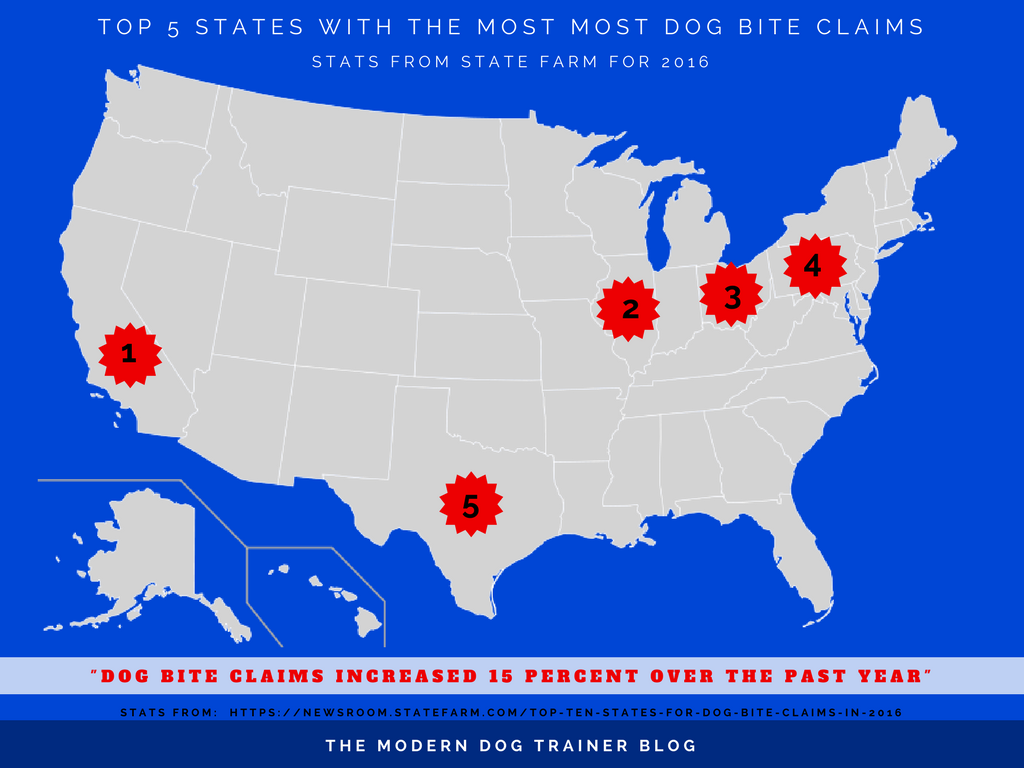
Stats from: https://www.dallasnews.com/news/texas/2017/04/12/texas-ranks-5th-nation-dog-bite-insurance-claims-state-farm-says
In my experience, many dog trainers don’t possess an insurance policy that covers them in some common scenarios that leave them vulnerable. Are you covered in case a dog you’ve worked with in the past reacts badly to someone? Or if that dog injures someone else while you’re out and about training? I share a list of questions in my 12-Week Start Your Own Dog Training Business course you can ask your insurance provider to determine if you’re appropriately covered for common situations that might arise as a dog trainer. You need to make sure you’ve got the right insurance to protect yourself and your business.
Additionally, it’s interesting to note that this increase in dog bite claims could eventually impact you as a dog trainer as insurance costs could increase due to the greater risk of taking on cases with a known bite history. It is definitely something to keep an eye on as our industry matures.
Cities With The Most Postal Workers Bitten By Dogs
Another interesting stat to look at is attacks on postal workers. Los Angeles, Houston, Cleveland, San Diego, and Louisville are the top cities with the most postal workers bitten by dogs. In LA alone, there were 200 more attacks than the previous year. As more and more people adopt dogs, these numbers are likely to rise if education about dog care and training isn’t provided to the community. As dog trainers, we can help educate the public, government, and even postal workers about dogs and dog behavior. Starting up an educational program for your local community could be a great way to become a go-to dog expert in your area.

Stats from: https://about.usps.com/news/national-releases/2017/pr17_016.htm
Now, if you know you’re ready to begin working with aggression cases, take into consideration the following recommendations for a successful behavior modification case.
Express The Severity And Seriousness Of The Dog’s Behavior
 Many dog owners, especially small dog owners, do not quite understand the severity of dog aggression. They do not understand that their dog could potentially cause injuries to small children, injury or death to other pets, and even legal action against them for negligence. When working with someone that has an aggressive dog with a known bite history, it is your duty as the professional in the situation to share the risks of continuing on with and without training now that the dog has already hurt someone.
Many dog owners, especially small dog owners, do not quite understand the severity of dog aggression. They do not understand that their dog could potentially cause injuries to small children, injury or death to other pets, and even legal action against them for negligence. When working with someone that has an aggressive dog with a known bite history, it is your duty as the professional in the situation to share the risks of continuing on with and without training now that the dog has already hurt someone.
Dr Risë VanFleet shares some thoughts on what to do when someone contacts you regarding a dog with a history of aggression:
My first step would be to write back indicating this sounds like a VERY serious and urgent situation, and that you would urge [the client] to set up an appointment immediately so she doesn’t end up with serious injury and legal issues with the visiting family or her own children. I would put a timeline for a response. “I urge you to call me by phone today from _____ to _____.”
– Risë VanFleet, Ph. D., RPT-S, CDBC
Expressing the severity of the case to your client should also help with compliance and commitment if they decide to move forward with training their dog.
Be Familiar With Your State And Local Dangerous Dog Law
Understanding your state and local dangerous dog laws are important when working with aggressive dogs. To find yours, go to Google.com and search “State And Local Dangerous Dog Law [state or city].” You could even reach out to your local animal control officers to see if they have any specific resources they could point you to. As a professional, it is your responsibility to be up to date on the latest laws and regulations in your community to help your clients and understand the risks involved.
Professionalism And Client Confidentiality
Though you should be respectful and keep client information confidential on a day-to-day basis as a professional dog trainer, we are not legally obligated to keep client discussions or cases confidential from police when one’s life is in danger. A common scenario like this is when potential clients or current clients whose dogs are posing a threat to children in the home. After discussing the severity of the situation with the client, if they fail to take action to protect the person in harm’s way, you may want to report it to local authorities.
You may not need to tell the client in some cases since a report only brings attention to the situation and begins the investigation process. However, you should not take reporting lightly.
It can disrupt lives, so [you] have a responsibility to check out everything as much as [you] can and avoid jumping to conclusions.
– Risë VanFleet, Ph. D., RPT-S, CDBC
Reporting A Dog Owner’s Negligence To Authorities
It is unfortunate, but many of us will come across dog owners that don’t take their dog’s behavior as seriously as we do. There are some situations in which you should call the appropriate authorities and report your cause for concern of the dog’s threat to the community.
In many states, there are penalties for NOT reporting child abuse or endangerment, so this would need to be considered as well for others reading along.
“Approximately 48 States, the District of Columbia, American Samoa, Guam, the Northern Mariana Islands, and the Virgin Islands impose penalties on mandatory reporters who knowingly or willfully fail to make a report when they suspect that a child is being abused or neglected.” – https://www.childwelfare.gov/topics/systemwide/laws-policies/statutes/report/
Information You Should Gather On A Dog With A Bite History
- Vet and medical history, shot records, etc.
- Bites, severity, frequency, targets, scenarios, ER visits, etc.
- Whether or not the dog has been reported as a dangerous dog before.
Your new client intake form should ask questions about the dog’s diet, the dog’s past behavior history, the owner’s lifestyle, the dog’s medical history, and much more. Asking questions not only gives you a better understanding of the context of the dog’s behavior, but you just might spur some old memories from the client that may be unexpectedly relevant to the dog’s behavior changes or issues.
I recently put together a bundle of templates for new (and experienced) dog trainers. This bundle includes a New Client Intake Form, Reactivity Intake Form, Bite History Intake Form, Resource Guarding Intake Form, and six more templates that every dog trainer can use on a daily basis to work with their clients. I recommend you check out my New Dog Training Business Template Bundle.
Taking on aggression cases is not to be taken lightly. Check out our article from dog aggression expert, Rachel Golub, CDBC, CPDT-KA, on how to know if you’re ready to take them on. Read: Don’t Get In Over Your Head When You’re Starting Out
Receive valuable dog training business tips and resources in your inbox.
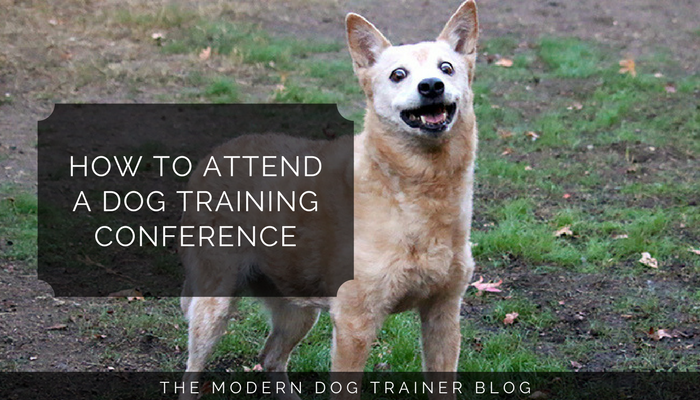
by Kat Camplin | Jul 28, 2017 | Business, Communication, Events
 With the registration date for ClickerExpo coming up, I began to think about what learning goals to concentrate on this year, who I wanted to hear speak, and if there should be a theme or if I should just see whatever sounded interesting. I then began to think about the other part of going to conferences; meeting people and networking. So many times I’ve seen someone I haven’t seen in years passing by in between sessions and had that 7 second drive-by conversation, “Hi! How are you doing! Great to see you! Let’s meet for lunch or something!” The other person responds, “Great!” and then that’s the end of it. This year, I really want to make a plan.
With the registration date for ClickerExpo coming up, I began to think about what learning goals to concentrate on this year, who I wanted to hear speak, and if there should be a theme or if I should just see whatever sounded interesting. I then began to think about the other part of going to conferences; meeting people and networking. So many times I’ve seen someone I haven’t seen in years passing by in between sessions and had that 7 second drive-by conversation, “Hi! How are you doing! Great to see you! Let’s meet for lunch or something!” The other person responds, “Great!” and then that’s the end of it. This year, I really want to make a plan.
1. Put people you want to meet on your schedule.
I always have the best of intentions and every conference I fail. This year I’m putting people on my schedule. Message people and ask them for a time to meet or share a meal or have a drink. Put the appointment on your schedule with a reminder so you don’t become that person that stood someone up at a training conference. You have 3 meals a day, after conference drinks, breaks in between speakers, and skipped session periods you can fill. Fill them. If meals are coordinated and prepaid you might consider skipping one and doing a DIY lunch at least one day to accommodate people who aren’t purchasing meals.
Related: Are drinks after the conference your favorite part of attending conferences? Do you like meeting online friends in-person? Ever wish you had a group of local, friendly dog trainers to chat with to continue the conversation? Check out our latest project: Mastermind Meetups for Modern Dog Trainers
2. You don’t have to fill every session.
I actually learned this when I got violently ill at a conference. Fatigue set in and I needed to prioritize my energy instead of my desire to see everything. There were some session slots where there just wasn’t anything that really perked my interest or I had seen all the presentations already. I skipped that period and took a nap, waking up refreshed for the speakers I really wanted to see. When I skipped and didn’t take a nap, I met a bunch of people that were also skipping! If you’re just trying to fill time by seeing a speaker, meet up with people instead.
3. Introduce yourself to people sitting or eating alone.
If you haven’t filled a meal period with a scheduled meet up then scan the dining area and look for people wearing the conference badge who are sitting alone. Go introduce yourself and ask if they want company. Please don’t push in if the person says they’d rather be alone. Conferences can be overwhelming and some people need quiet time. I’ve had many amazing conversations eating with strangers. Meeting and talking to people way outside your normal circle can be more educational than some presentations. This practice also makes everyone feel welcomed and interesting. Which brings us to number 4.
4. Remember to get cards or contact information for people you meet.
I’m putting this on a post-it note on my forehead this year, “Please give me your business card.” After introducing myself and eating with a stranger and having a lovely conversation, it inevitably happens that the conference bell rings and you’re off and running to the next session. The number of times I’ve grabbed my things and said, “Thank you for the wonderful lunch!” then sprinted away is embarrassing. Take a moment, get a card or have the person put their email address in a note for you. When you get seated at your Must Get To session, make a note of where you met them, what you did together, and the general topic of conversation. Even if you never message them you will have a reminder if you see them at the next conference.
5. Organize meetups with your virtual friends.
We all have them, people we “know” from Twitter, Facebook, certification organizations, clubs, and schools. Schedule a meetup and get a few people you want to meet in one place. On Twitter you can create a hashtag and have people retweet or reply they’d like to join. You can create calendar and Facebook events so other people can invite other people. While it may seem fun to set these up for dinner at a restaurant, some trainers are on a budget. You might consider doing these in hotel common areas instead of restaurants so everyone can bring their own food yet still have dinner together. Remember to send reminders to everyone who was interested when you get to the conference.
Check out our latest project: Mastermind Meetups for Modern Dog Trainers
Did we miss anything? What is your go-to strategy for attending conferences? Tell us in the comments!
Receive valuable dog training business tips and resources in your inbox.
![Bringing Modern Dog Trainers Together for Education]()
by TMDT Team | Oct 30, 2015 | Communication
This post is a guest post by Miranda K. Workman, MS, CABC, CBCC-KA, CPDT-KSA. We are honored to share with you a situation that proved that modern dog trainers can in fact come together to bring awareness into the community.
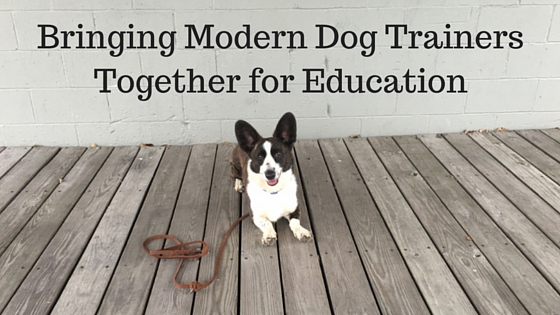
At a recent TEDxBuffalo presentation about building community one speaker said, “Community begins where there is conflict.” Those words came to life for me on October 17, 2015. As a certified behavior specialist, I meet many people in my professional career. One of those individuals is Melissa Henchen, the president of Going to the Dogs rescue based in Perry, NY. A newspaper in her local area had printed a story about a local trainer who presented outdated information about canine behavior. The article was filled with references to humans as alpha wolves who give direction (never affection). It was an article that was completely void of current scientific understanding about learning theory, canine behavior and ripe with anthropomorphic explanation about cross-species social relationships.
After reading this article it was clear that allowing this outdated information to go without comment was a disservice to the pet owning public who are part of the readership for this paper. The rescue president and I knew this was an opportunity to educate the public. We just needed to decide how to do it. We decided a direct response to the paper would be the best course of action. 24 hours later I had finished the first draft of a letter to the editor of the paper. After sharing the draft with the rescue president, we talked about who would sign the letter…then it hit me. This should be a community response. Not a response from one, two, or three individuals. We needed to “rally the troops.”
Over the last few years there have been a few opportunities when training and behavior professionals, leadership from various rescues, groomers, daycare operators and others have come together. Most of those meetings were informal social gatherings as we all started to get to know one another. Although our philosophies were aligned, there had been little formal effort to communicate with the general public about science-based training focused on positive reinforcement. This opportunity gave me a reason to get everyone together with a specific and formal goal. Oh…and with a deadline.
I worked on reaching out to my colleagues and other contacts in the Buffalo, NY area. Melissa reached out to those in the Rochester, NY area. Once several people agreed to participate, we used social media to collect everyone in one virtual location to discuss the letter. Realizing that media is like capturing lightening in a bottle, we knew we had to act quickly. A quick response would maximize the effect as the previous article would still be in the readership’s consciousness.
Although there was some debate and we ended up with a third, final version of the letter, after 24 hours of bringing the group together we had twenty-two individuals who were willing to stand together as a group to educate the general public. The letter was published – in its entirety including references – seven days after the original article aired. We posted the letter on social media and found supporters across the nation who joined with us by adding their signatures in the comments of the online version of our letter. By networking with others, even members in our online communities pledged their support of the efforts of this new community in WNY.
Through this conflict, I am confident and hopeful that a new community has been forged. I have already reached out to those twenty-two signers to create a regional education organization. No doubt more will join us. The sum of all the parts of this new community will no doubt become very a prominent whole in the larger community of Western New York. I am already preparing to plan the first meeting where this new community will begin to determine our mission, vision, guiding principles and goals. As a group we will work to coordinate action plans to fulfill those goals.
Ultimately, it was by being both diverse and inclusive that we met this time-sensitive goal. I hope that we will continue to be diverse in this new community’s membership while including all those who share our desire collaboration for the sake of education about current, science-based behavior and training information in our larger community.
Link to original article
Link to response
About the Author
Miranda K. Workman, MS, CABC, CBCC-KA, CPDT-KSA has been President and CEO of Purrfect Paws Animal Behavior Center since its inception in 2006. A voracious reader and tireless researcher, she strives to understand and apply the most “up to date” developments in training and behavior.
She has over 14 years experience in applied animal behavior and training. She is an experienced behavior specialist with a well-respected reputation including being listed as a WNY expert by the Buffalo News. While she works to rehabilitate many different behavior concerns of pet owners, she especially enjoys working with multi-pet households, aggression and feline behavior problems.
She also served from 2007-2011 on the Board of Directors of the Certification Council for Professional Dog Trainers, Inc. (CCPDT); three of those years she was President of the Board and was responsible for the creation and implementation of the Certified Behavior Consultant – Canine certification exam. Currently she serves as the Chair of the Cat Division for the International Association of Animal Behavior Consultants, Inc. (IAABC).
![Bringing Modern Dog Trainers Together for Education]()
by Ines | Oct 10, 2015 | Business, Communication
When a prospective client calls you, it is unlikely that they know exactly what to expect. Usually, all they know is that they are in over their heads and they need professional help. Here we discuss the process a successful dog training guides their client through to create a satisfying customer journey.
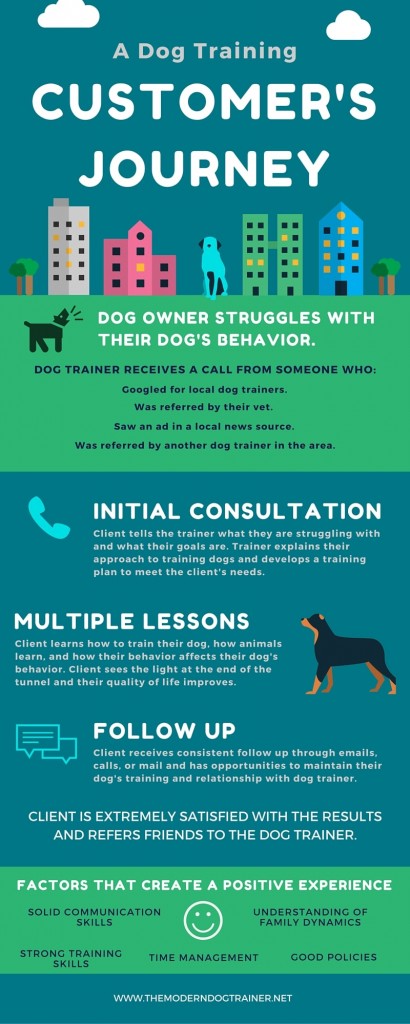
Acquiring a Dog Training Client
Clients usually get your contact information through four main sources.
- Search Google for local dog trainers
- Their vet refers them to you after you’ve created a strong relationship with the vet.
- Advertising you have paid for in local news sources.
- Another trainer refers them to you if they are unqualified or don’t have time.
Initial Dog Training Consult
The client then goes through an initial consultation either on the phone or in person. This is where you gather as much information about their case as you can. During this consultation, you can develop a training plan that will suite the needs of the dog as well as the family’s situation. This takes a deep understanding of animal behavior training and setting realistic goals for this particular dog and family. Each family will require different environmental setups and each dog will learn in their own way. The more families you work with, the more you will expand your tools in your toolbox.
Several Lessons to Follow-Up
Several lessons are usually needed to make progress in any case. Rarely will one lesson solve an issue. Several lessons allow you to address other issues that may pop up and will allow you to make sure clients are implementing training techniques correctly. Client’s quality of life should improve quickly and they should start to see the “light at the end of the tunnel.”
Follow-Up After Dog Training Lessons
Most new trainers fail when it comes to this part of the client’s journey. (It is something I have done in the past due to lack of experience and understanding.) It is easy to complete lessons and then never initiate conversations with the client again once their problems are “fixed.” However, this is a huge missed opportunity! Maintaining a relationship with the client means you can offer them more services (and continue your income). They will maintain their dog’s training better in the long run. And, ultimately, you’ll stay fresh in their mind so when their friends complain about their dog’s behavior, they can quickly recommend you!
Many factors play a role in satisfying clients. Dog training is a challenging service because much of what contributes to the success of the dog’s training is out of your hands. You can make recommendations, but there is no way to quickly “fix” the dog without complete cooperation from the owner. Even then, many other factors contribute that are out of your control – genetics, history, environment, etc.
Factors that you CAN control include:
- Good communication & social skills
- Strong training skills/knowledge
- Understanding of family dynamics
- Good policies, time management, upholding your promises/appointments
- Follow up with client after lessons are complete
- Provide additional services for maintaining training for dog & relationship with owner
Being a successful dog trainer means being an ever-learning business owner so you can provide the ultimate experience for your customers. In the end, the most successful businesses have a lot of word of mouth referrals. What part of the dog training client’s journey do you need to improve? Share your thoughts in the comments below!
Get Dog Training Business Tips!
Receive valuable dog training business tips and resources every week! Subscribe to The Modern Dog Trainer now by submitting your name and email below.
[mc4wp_form]
![Bringing Modern Dog Trainers Together for Education]()
by TMDT Team | Oct 5, 2015 | Communication

The New Social Platform
Gone are the days of mailers, a back page newspaper brief, university class, or waiting for the monthly journal to arrive a-la-mailbox for the latest training buzz from the top world instructor. Access to millions of bits of intellectual property float incessantly around every social media platform that exists and much of it without a footnote or resource listed. Social media is now how we get our information out to people and often educate ourselves. These platforms can certainly be invaluable avenues for teaching, demonstrating and exposing wonderful new articles and sharing training tips and advice quickly and with wonderful accessibility. What comes along with digital accessibility, however, is anonymity and interaction.
Platform Or Soap Box?
When accessibility and anonymity meet online, the interactions can become, at best, thought-provoking or educating. At worst, attacking, bullying, ugly, demeaning or misinforming. Even dangerous. The purpose of this blog is to bring these conditions to light, and for us as educators and professionals to really use social media carefully and expertly. Regardless of what your method of delivering information is, use caution when opening a can of worms….
Each person is an individual. When our online ideas are attacked some of us will tend toward standing up to our aggressors and others of us may just sit reading the thread, seething (yours truly). Let me be clear about what I’m suggesting: It’s not our difference of opinion that’s no good; it’s how we share it.
Cognitive Dissonance
Copernicus, Columbus, Newton and Einstein were all brilliant men that had to prove to the masses something that was outside of a current belief system, even beyond opinion. Wait, isn’t science always right? Why would we challenge science? Well, to move forward and ask, “is there a better way?” Questioning science is the best part of science. If we can remember that science isn’t static we can be better at keeping our mind open to new theories and practices in the world of training and behavior.
Things change when discoveries are made. Just this month, six female anthropologists found a new type of human! As we know, new information added to current knowledge is how we advance. When we as individuals are so rooted in “the one way” that something works, we are closing off the possibility of becoming more skilled and effective.
“Sometimes people hold a core belief that is very strong. When they are
presented with evidence that works against that belief, the new
evidence cannot be accepted. It would create a feeling that is
extremely uncomfortable, called cognitive dissonance. And because it
is so important to protect the core belief, they will rationalize,
ignore and even deny anything that doesn’t fit in with the core belief.”
― Frantz Fanon, Black Skin, White Masks
Now, don’t get me wrong, I love a strong intellectual scientific conversation online, but I have a set of criteria that must be followed for an intelligent conversation.
• Facts – back up thoughts with credited articles and/or journals.
• Politeness – comment and ask respectfully, ask for clarification first (yes, this goes for me, too!).
• Topic Focused – as we respond, are we discussing facts or are we taking things personally?
• Reputability – spend your time in groups that have a great code of conduct and that monitors their threads.
Here’s an excerpt I like from Lisa White of Positive Pet Advice:
CODE OF CONDUCT
• Treat people with respect. Even if you disagree with them, they, like you, are entitled to feel free to express their opinions.
• Do not bash, put down or insult anyone, no negative personal attacks/comments. You may argue the idea, the method or the opinion, but do not attack the people.
• There is a difference between being passionate about something and being aggressive. Aggression will not be tolerated.
• Rudeness of any kind will not be tolerated.
• Name-calling will absolutely not be tolerated.
• You will avoid criticizing others for their choices. By refraining from criticizing, you are opening up an audience to listen to your message instead of making them defensive.
• Follow your own training advice: Ignore what you don’t like and acknowledge and reward what you do like. Also, give alternative options.
• Positive reinforcement is also expected to be used for people too.
Choose Your Camp
The sheer magnitude of people online is amazing, and the beauty of life is having choice. Even with choice, some people will choose to believe in dominance theories and the use of force and coercion. Rather than feeling it my job to change their mind, I chose a long time ago to know that it’s not my job to sway people that are happy shocking dogs and popping collars, but to focus my energy on those who want my knowledge. Otherwise I sometimes feel like I’m spitting at the rain. By focusing my energy on people that are craving knowledge and want to do what’s right (in my opinion) for their dogs, I can be most effective. This way my energy spent can be most effective if I work in the forums where the people and advice is congruent to whom I am. In other forums, I have found sometimes it’s best to just walk (or click) away.
I’ll leave you with one of my favorite quotes:
“Never argue with a fool or a drunk; people standing by won’t know who the fool or the drunk is.”
Get Dog Training Business Tips!
Receive valuable dog training business tips and resources every week! Subscribe to The Modern Dog Trainer now by submitting your name and email below.
[mc4wp_form]
![Bringing Modern Dog Trainers Together for Education]()
by Ines | Aug 15, 2015 | Communication
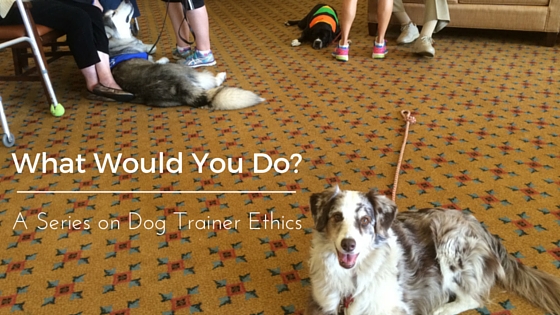
Ethics in the dog training industry is a major area of conflict. Ethics surrounds a variety of topics including relationships between trainers, professionalism, client relations, and, of course, training methods. In this article, some of the professional dog trainers and writers of The Modern Dog Trainer blog discuss their opinions regarding relationships and conflicts between other professional dog trainers. Take a look at what we had to say!
Dog Trainer Ethics – Colleague Relations
#1 – Competition is steep in dog training. Anyone can become a self-proclaimed dog trainer which has its benefits and its downfalls. How would you approach a new trainer entering your service area? How would you gauge their competence?
Kat: Since 95% of dogs receive no training at all, the competition isn’t other trainers, it’s the dog owner who sits on the sofa and does nothing. The only reason to gauge their competence would be to send referrals when I’m busy. If I’m vetting a trainer for that purpose there are usually tacos and margaritas involved.
Liz: I’m not a full-time trainer, so maybe #1 doesn’t affect me as much as others. But I’m thrilled when I can offer other resources to people whose schedules don’t mesh with mine, or if their dog’s issues are outside my knowledge base. I use word of mouth and FB page/website reviews to begin my gauging of their competence.
Lisa: I would introduce myself to them and let them know that I have been training for many years and would love to be able to refer clients to them if I could not fit them in. During the convo, I would ask questions as to how they became a trainer, their experience, how many dogs they have trained, what methods they use, what books they’ve read, what courses they’ve taken, who they apprenticed under, etc.
#2 – What are some benefits to welcoming the new trainer with open arms? What are some downfalls to being so open and friendly to them?
Liz: I generally don’t see downfalls, again maybe because I’m a part-timer. Huge positive to being welcoming though, as I said above, is another person to refer cases to.
Lisa:
- Benefits – someone who may refer you to clients they cannot deal with, someone you can talk to, share ideas and help each other out.
- Downfalls – They use your info and go behind your back to contact your clients, bad talk you, undercut you in prices.
#3 – Lets say that there is a trainer in your area that is less than positive with the dogs, but he has a great reputation with the community. How do you educate your clients about the differences between you and the competitor without turning them off?
Kat: The only reason to discuss another trainer is if an existing client used that trainer previously. This is fairly common for behavior modification cases. There generally isn’t enough time to discuss other trainers, either good or bad. Just discuss the training techniques that failed and why they need to be changed.
Erin: I find it more professional to not so much address the trainer as much as methods used. Discuss how the methods can be disadvantageous to the training using science and examples. This way the client is provided with information to make a sound decision.
Monica: I generally explain how I train and include things I don’t train with. I’m very open with how I train and let them know I use no fear or intimidation. I just kindly tell them that their training methods and my training methods differ greatly.
Liz: I leave it with, “their methods are very different from mine,” and then I explain my methods.
Lisa: The key is to never criticize the competition. Simply explain the positive methods that I use, letting them know that studies and research has been done to show it is more effective than using aversives. Quote the AVSAB Position Statements and use examples of their work environment or kids in learning in school. I find it’s very helpful to use examples that they can personally relate to.
#4 – Many times, online and offline, even positive trainers have their disagreements. How do you agree to disagree politely? (Feel free to give an example.)
Monica: Just tell them, I don’t agree with that statement but it is ok. We have come to different conclusions through our studies of dog training. If they continue to heckle you about your choices, then it’s time to leave the discussion.
Liz: I explain my side and leave it at that. Arguing won’t change minds. I prefer to change minds by using my training as an example, as opposed to lambasting people. Positive training works on people, too.
Lisa: I would let them know that we don’t have to agree. Everyone is entitled to their opinions and, just like how they gave their opinion, I have given my opinion.
#5 – Dog training is a very emotional industry. What would be an appropriate response when you discover someone is bad mouthing you within your service area?
Kat: Ignore it, unless it takes the form of fake reviews and infiltration of your social media accounts, in which case seek legal counsel.
Liz: Again, I won’t argue back or badmouth back. I take the higher road and let it go. I let my training speak for itself.
Lisa: I would need to find out what they were bad mouthing me about, and try to explain the situation to them. If they persist, then I would send a lawyer supported letter to see if I could get them to cease and desist. Or it just might not be worth the hassle, so I just ignore them completely.
Join in the conversation! What would you do in these situations? Leave your response in the comments below.
Get Dog Training Business Tips!
Receive valuable dog training business tips and resources every week! Subscribe to The Modern Dog Trainer now by submitting your name and email below.
[mc4wp_form]
![Bringing Modern Dog Trainers Together for Education]()
by TMDT Team | Jun 24, 2015 | Communication
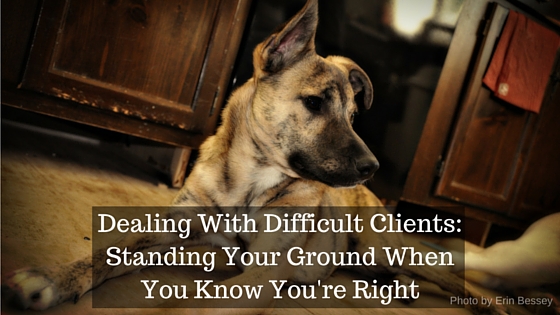
After 10 years in business nothing surprises me. There is no client that can intimidate me, bully me, or otherwise make me feel like I did something to wrong them. I have built a reputable business with thousands of happy customers. Yet, despite that, there will always be otherwise “difficult” customers who will do their best to test your patience and professionalism. Heck, sometimes there’s even customers who for a split second will make you feel like you should throw in the towel. What you need to understand as a business owner, and an expert in our industry, is that you cannot make everyone happy. This is a harder egg to swallow than we want to admit. After all, we’re dog trainers! What does that actually mean? That means we have feelings. We have empathy for people. We want to make people happy through the service we provide, so we genuinely do feel bad when we let them down – even if and when we know it’s not our fault.
What You Should Do With Difficult Clients
I’m here to tell you to man up. Yes, you heard me. Get over it! Customers that make you feel like you’re a bad person in some way are not worth your time, the same way that a boyfriend or girlfriend who is emotionally abusive to you in any way is not worth your time. At the end of the day, it’s all about relationships, right? Nod yes with me here, because you know I’m right.
For reference, here’s an email I received just tonight from an unhappy customer who is convinced, wrongly, that she wasn’t made aware of our policy to schedule classes in advance:
Dee,
When I paid for Fluffy, nobody told me anything about pre booking. This is not a cceptable, figure out something else, or reimburse the unused lessons, and I will figure out how I get Fluffy trained. How can you take my money, do not give explanations and do not have space in class?!!!!!!
Upset
Ok. So let’s take a look at the above for a second. Firstly, I don’t take you seriously because you a) couldn’t take the time to write me a proper email with proper spelling, grammar or punctuation and b) you were pushy, demanding and downright rude. Do you actually think you are threatening me by taking your business elsewhere? You’re not. Do you know why: because you won’t find better trainers, service, or facilities elsewhere. You, client, just shoved your foot in your mouth because you actually thought that by writing me an off the cuff frustrated email would actually get the results you desired. You are so wrong.
Here is my response:
Client,
Unfortunately I cannot make a space appear that doesn’t exist. We have an eight-dog limit per class so that all dogs in class have an enjoyable experience. We cannot overbook the classes otherwise we compromise the quality of the training that we provide. Happy to refund your money — I’ll get a check in the mail to you tomorrow, that’s not a problem. Obviously there was a miscommunication somewhere along the way. It has always been our policy to pre-book for group classes. I’ve been in business for ten years and we’ve always required pre-booking for group classes, so I’m a bit surprised that somehow that wasn’t communicated clearly to you. I don’t know who originally sold you the group class training package but apologize that we didn’t meet your expectations. Again, I’ll put a check in the mail to you tomorrow.
Sincerely,
Dee
Ok, so yes. My email did take one dig at her. But she totally deserved it. Where in business does it say you have to always be 100% polite? Nowhere last time I checked. Sometimes people need to be dished out what served. That doesn’t mean you have to be super rude, or unprofessional, but when a client thinks they can bully you into giving them a result that you simply can’t give you have every right, in my opinion, to make it one hundred percent clear that their expectations are unrealistic. My client’s demand for me to “figure out something else” is absolutely ridiculous! I mean, seriously?!
After I intentionally put her in place, I made it clear why I couldn’t accommodate her. This isn’t about her, this is about my business and the over all well-being of all clients that use our services. I have policies in place for a reason, lady! At the end of the day, those policies benefit my customers. If you can’t wrap your head around that then I’d be more than happy to show you the door! After showing her the value as to why we require pre-booking, I did apologize. That is, after all, the professional thing to do. I would never, as a business owner, deny somebody an apology for the slim to none chance that it was our screw up. It’s the least I can do. Lastly, I would also never, as a business owner, deny someone a refund for un-used services. I have always felt that the absolutely worst thing you can do for your business is tell a customer that there are no refunds. I feel that by not providing a refund for unused services you are indicating to your customer that you value money more than the quality of service you provide. As dog trainers, I know for all of us that is simply not true. We’re not in this for the money, so let’s not fight over $100 bucks.
Moral of the story? “Difficult” customers aren’t worth your time. Let them go instead of trying to accommodate them. As soon as they walk out that door they make room for your next best, and ideal, customer who will appreciate the type of service you’re trying to provide.
About The Author
 Dee Hoult is the CEO of Applause Your Paws, Miami’s largest privately owned reward based dog training company. With twenty-two employees strong, Dee believes in positive people training as well as positive leadership based training for her employees. Although Dee still does see private clients for behavior cases, she is most passionate about her company, her people, and her business processes. Dee personally owns five dogs, two cats, and has a reef aquarium. Her husband Sam is lucky enough to also be one of her most valued employees as of January 1, 2015. You can follow Dee’s business on instagram @applauseyourpaws or on facebook at www.facebook.com/applauseyourpaws.
Dee Hoult is the CEO of Applause Your Paws, Miami’s largest privately owned reward based dog training company. With twenty-two employees strong, Dee believes in positive people training as well as positive leadership based training for her employees. Although Dee still does see private clients for behavior cases, she is most passionate about her company, her people, and her business processes. Dee personally owns five dogs, two cats, and has a reef aquarium. Her husband Sam is lucky enough to also be one of her most valued employees as of January 1, 2015. You can follow Dee’s business on instagram @applauseyourpaws or on facebook at www.facebook.com/applauseyourpaws.
![Bringing Modern Dog Trainers Together for Education]()
by Ashley Oslund Altamirano | May 22, 2015 | Communication

Whether you have just met a client for the first time or this is their last scheduled session, all 5 of these techniques are important to use to maintain a lasting relationship between trainer and dog owner.
1. Empathy
This requires exceptional communication and a great imagination. Express understanding of what the client is feeling. Employ active listening skills and clarify the situation they are experiencing. All of these are learned, no one is born with this ability. Take the time to memorize some open-ended and non-judgmental questions to use when clarifying what a client is saying. Keep the questions on an index card somewhere you will see them just before a client session. ‘When you said….what did that mean?’ Or simply paraphrase what they said and ask if that is correct. Don’t be critical of the client, their methods or equipment.
Related Article: The Best Approach for Addressing Aversives and Equipment with New Clients
2. Use Their Name
Remember their name (not just the dog’s). We can tell you a dog’s name from 8 and a half years ago without blinking. Find a way to remember the human’s name as well! Use their name to address them when first greeting, instructing and leaving. Think about how great it feels when you hear your own name through a warm smile as you enter a room.
3. Use Humor
Comedians don’t come up with everything on stage right there on the spot. They plan ahead for those moments. Practice getting laughter out of people. Think of slightly awkward situations dog owners get into and make light of it, by telling a story of yourself going through the same embarrassment. We have all been there!
4. Show Appreciation
Say ‘thank you’ & make eye contact, not just ‘um, thanks’. Handwritten notes, however small can go a long way. Send a personalized note with a picture of their dog as a follow-up. Ask if you may share a picture of their dog on your business Facebook page to show how proud you are of their progress. When you are thinking of someone – let them know by texting, calling or emailing. ‘I was at this cute little boutique downtown and they had a Newfoundland hand towel – it made me think of Nora & you!’
5. Under Promise & Over Deliver
Getting a thoughtful gift is over delivering. Anticipate their needs with a Kong or other toy (braided old t-shirt) for their first puppy ever. Be careful about what you promise. Specifying that they will be called at a certain time may be setting them up for disappointment if something unexpected pops up.
“Promise your commitment, but never a specific outcome” – Dee Hoult Applause Your Paws Inc.
Sometimes you won’t see the immediate effects of employing these 5 ways to win over clients, but they will always remember what made them feel appreciated! Years later a dog owner may run into you on the street and express how wonderful a trainer you were for them and their pet, even if they clearly weren’t doing their homework some weeks.
Which of these have you already been using and which will you add to your repertoire? What others would you add to this list?
Get Dog Training Business Tips!
Receive valuable dog training business tips and resources every week! Subscribe to The Modern Dog Trainer now by submitting your name and email below.
[mc4wp_form]
![Bringing Modern Dog Trainers Together for Education]()
by Lisa | Mar 25, 2015 | Communication

I am sure that we have all encountered at least one client, whose green-eyed monster has made an appearance when another client’s dog performed exceptionally well in class. What are the signs and how do we handle the situation?
Jealousy may be conveyed by:
- Smirking or making sarcastic comments
- Downplaying the success of others
- Lack of support (not complimenting or congratulating others)
- Backhanded compliments (“Oh your dog did very well, despite your messing up”)
- Tearing down others (Caustic or derisive remarks or open antagonism)
Jealousy is a normal reaction, especially when someone feels insecure about their abilities; however, we don’t want them taking it out on their dogs or making others uncomfortable.
Strategies To Address The Jealous Client
How can you as the trainer, help minimize jealousy in your class? Below are some strategies that have worked for me:
- Just as we tell our clients to ignore their dog’s bad behavior, we do the same with jealous people – ignore their behavior, NOT them.
- Look for their strengths, what they and their dogs do well, and point them out to everyone.
- Praise them for their successes and achievements (big or small).
- Encourage them when things don’t go as planned, and remind them of what they have accomplished.
- Focus your attention on their efforts (everyone can reach their potential through practice).
- Help them to improve in the areas in which they feel inadequate, you may suggest that they stay an extra 10 minutes or request a private session to catch up and feel more confident.
- Encourage a group atmosphere where everyone encourages and applauds each other and their dogs’ achievements.
- Let the group know that skills take time to learn, and through practice these skills will become second nature.
- People need to understand that like us, some dogs learn faster, while others take longer to grasp things.
And as the saying goes, no one is perfect and that includes our furry friends. So encourage them to enjoy the process of training instead of focusing on who’s achieving their goals first.
What are some of the ways you have dealt with jealousy in your class?
Get Dog Training Business Tips!
Receive valuable dog training business tips and resources every week! Subscribe to The Modern Dog Trainer now by submitting your name and email below.
[mc4wp_form]

 I wanted to take my goal a step further and help other trainers be more successful, thus helping even more dogs. I came to recognize that other trainers are not always successful in connecting with clients. This leaves them feeling frustrated with their jobs, as they are unable to help the dog. Sometimes, this leads to blaming the client – they aren’t compliant, they don’t practice, they don’t listen, and so on. I believe it is up to us as trainers to discover why they are struggling, and take on the challenge of helping them to succeed. People are complicated beings with a variety of circumstances, experiences, and motivations. Your job is to help with one aspect of their lives, their dog’s behavior.
I wanted to take my goal a step further and help other trainers be more successful, thus helping even more dogs. I came to recognize that other trainers are not always successful in connecting with clients. This leaves them feeling frustrated with their jobs, as they are unable to help the dog. Sometimes, this leads to blaming the client – they aren’t compliant, they don’t practice, they don’t listen, and so on. I believe it is up to us as trainers to discover why they are struggling, and take on the challenge of helping them to succeed. People are complicated beings with a variety of circumstances, experiences, and motivations. Your job is to help with one aspect of their lives, their dog’s behavior. Depending on whether you do in-home training, or facility based training, you may be able to tell more or less about your client’s life circumstances. I have found this to be absolutely no indication of how dedicated a client will be, so this information is to be taken in without judgement. However, having a feel for whether a client has a limited income vs. money to spare can help you to communicate in a way that is empathetic toward their situation. Suggesting cost effective options for some of the equipment and enrichment items they might need will go a long way to helping someone who saved up for your training package feel like they can accomplish their goals. Other clients may be more than willing and able to buy anything that might help them, and will appreciate you suggesting the top products on the market.
Depending on whether you do in-home training, or facility based training, you may be able to tell more or less about your client’s life circumstances. I have found this to be absolutely no indication of how dedicated a client will be, so this information is to be taken in without judgement. However, having a feel for whether a client has a limited income vs. money to spare can help you to communicate in a way that is empathetic toward their situation. Suggesting cost effective options for some of the equipment and enrichment items they might need will go a long way to helping someone who saved up for your training package feel like they can accomplish their goals. Other clients may be more than willing and able to buy anything that might help them, and will appreciate you suggesting the top products on the market. 




 Many dog owners, especially small dog owners, do not quite understand the severity of dog aggression. They do not understand that their dog could potentially cause injuries to small children, injury or death to other pets, and even legal action against them for negligence. When working with someone that has an aggressive dog with a known bite history, it is your duty as the professional in the situation to share the risks of continuing on with and without training now that the dog has already hurt someone.
Many dog owners, especially small dog owners, do not quite understand the severity of dog aggression. They do not understand that their dog could potentially cause injuries to small children, injury or death to other pets, and even legal action against them for negligence. When working with someone that has an aggressive dog with a known bite history, it is your duty as the professional in the situation to share the risks of continuing on with and without training now that the dog has already hurt someone.





 Dee Hoult is the CEO of
Dee Hoult is the CEO of 



